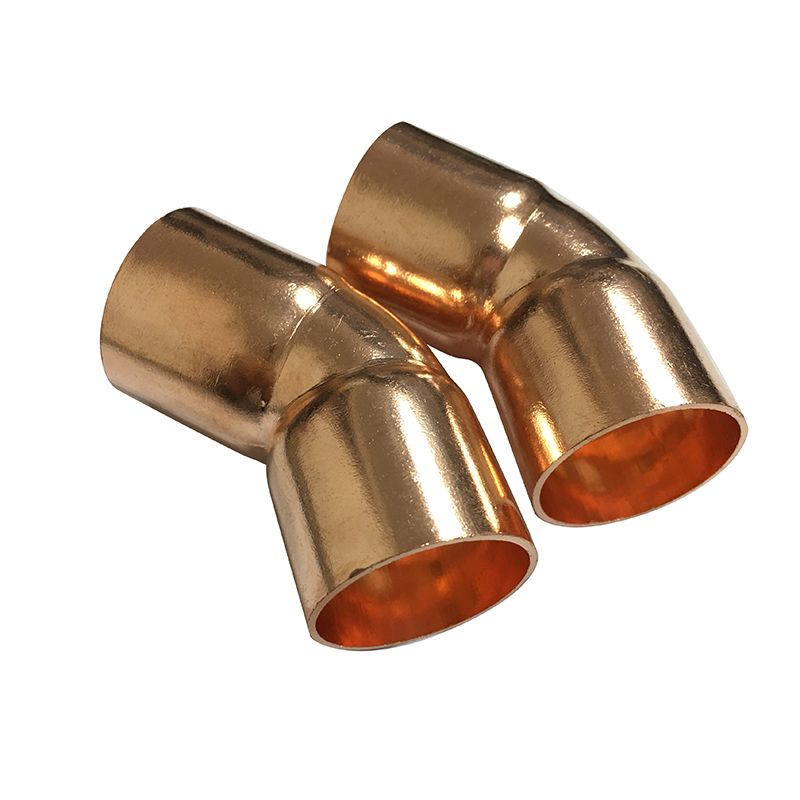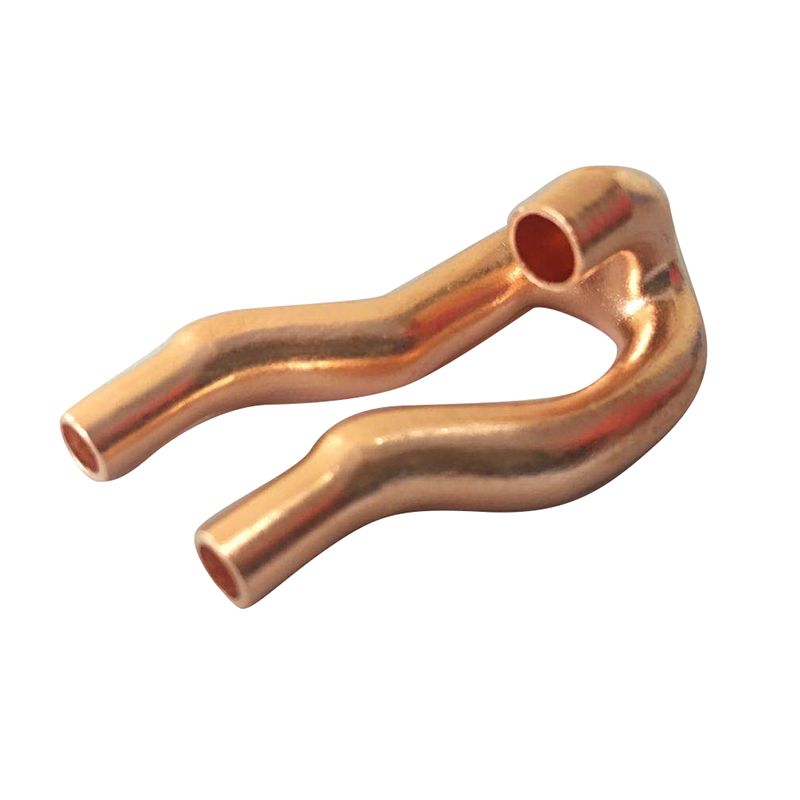How Do Copper Fittings Ensure Reliable Connections in Plumbing and HVAC Systems?
2025-09-19When it comes to creating dependable piping systems, copper fittings remain one of the most trusted solutions across plumbing, HVAC, refrigeration, and industrial installations. For decades, copper has been regarded as a premium material due to its strength, corrosion resistance, and excellent thermal and electrical conductivity. Fittings made from copper carry these advantages forward, ensuring reliable connections and long-lasting performance in critical applications.
A copper fitting is essentially a connecting component used to join, terminate, or redirect copper pipes within a system. They come in various shapes, sizes, and configurations, enabling installers to construct highly adaptable piping networks. Whether for carrying potable water, refrigerants, or gases, copper fittings serve as the backbone of leak-free and efficient systems.
The popularity of copper fittings lies in their dual advantage: they are easy to install and maintain, while also offering superior durability compared to plastic or less robust alternatives. Their ability to withstand high pressure, extreme temperatures, and corrosive environments makes them indispensable in both residential and commercial settings.
To provide a clear picture of their technical profile, here is a concise overview of product parameters:
| Property | Details |
|---|---|
| Material | High-grade copper (C12200, phosphorus-deoxidized copper) |
| Size Range | 1/4 inch to 6 inches (custom sizes available) |
| Types of Fittings | Elbows, tees, couplings, adapters, reducers, end caps |
| Connection Methods | Soldering, brazing, press-fit, compression |
| Pressure Resistance | Up to 800 psi (varies by fitting type and size) |
| Temperature Resistance | -40°C to +250°C |
| Standards Compliance | ASTM B88, ASME, EN, ISO certifications available |
| Surface Finish | Clean, smooth, free of scale and oxidation |
| Durability | Excellent corrosion resistance, long service life (50+ years) |
These parameters illustrate why copper fittings are consistently selected by contractors, engineers, and facility managers around the world. Their compatibility with industry standards ensures both safety and reliability in demanding environments.
How Are Copper Fittings Applied Across Plumbing, HVAC, and Industrial Systems?
The versatility of copper fittings stems from their ability to adapt to a wide range of applications. From small-scale residential plumbing projects to expansive industrial installations, copper fittings provide consistent performance and adaptability.
1. Plumbing Systems
One of the most common uses of copper fittings is in residential and commercial plumbing. Copper has natural antimicrobial properties, making it an excellent choice for potable water systems. Fittings such as elbows, tees, and couplings help create complex piping layouts without compromising safety or water quality. In addition, copper’s resistance to scaling ensures uninterrupted flow and minimal maintenance.
2. HVAC and Refrigeration
Copper fittings play a crucial role in heating, ventilation, air conditioning, and refrigeration (HVAC-R) systems. Because copper conducts heat efficiently, it is the preferred material for transporting refrigerants and hot or chilled water. Brazed copper fittings withstand high pressures and fluctuating temperatures, making them essential in modern climate-control infrastructure.
3. Gas Distribution
Natural gas and liquefied petroleum gas (LPG) distribution systems benefit from copper fittings due to their tight sealing capabilities and fire resistance. Properly brazed copper joints reduce the risk of leaks, offering an added layer of safety for critical gas supply lines.
4. Industrial Applications
In chemical processing, oil and gas, and power generation, copper fittings ensure reliable fluid and gas transport under harsh conditions. Their resistance to corrosion makes them particularly suitable for systems exposed to chemicals or marine environments.
5. Renewable Energy Systems
With the rise of renewable energy, copper fittings are now increasingly used in solar thermal heating systems and geothermal heat pumps. Their durability ensures long-term performance while supporting sustainable energy infrastructure.
This wide-ranging adaptability shows how copper fittings are not only a traditional solution but also a forward-looking one, supporting both conventional and renewable energy applications.
How Do Copper Fittings Contribute to Durability, Safety, and Sustainability?
In today’s construction and industrial sectors, decision-makers prioritize safety, efficiency, and environmental responsibility. Copper fittings meet all three requirements while providing unmatched longevity.
1. Durability and Performance
Copper fittings are engineered for long service life, often exceeding 50 years under normal conditions. Their resistance to wear, impact, and mechanical stress ensures that they perform reliably even in demanding environments. This durability significantly reduces replacement and repair costs.
2. Safety and Reliability
Copper fittings provide secure, leak-resistant joints when installed correctly. In pressurized systems, this ensures safety for both residential and industrial users. Furthermore, copper is naturally fire-resistant, making it suitable for installations in environments where safety cannot be compromised.
3. Sustainability and Eco-Friendliness
Copper is a 100% recyclable material, and fittings made from copper can be reused without loss of performance. This aligns with global sustainability goals by reducing waste and conserving natural resources. Additionally, copper’s antimicrobial properties contribute to safer potable water systems, reducing the spread of harmful bacteria.
4. Efficiency in Energy Systems
Because copper has excellent thermal conductivity, fittings in HVAC and solar thermal systems minimize energy losses, improving overall efficiency. This not only lowers operational costs but also contributes to reduced carbon footprints in buildings and industrial facilities.
The combination of durability, safety, and eco-friendliness explains why copper fittings remain a preferred choice even in an era where alternative materials exist.
How Can Businesses and Installers Leverage Copper Fittings for Long-Term Benefits?
For businesses, contractors, and system designers, the choice of fittings directly impacts system reliability, maintenance costs, and compliance with regulations. Copper fittings provide multiple strategic advantages that extend far beyond their initial installation.
-
Reduced Maintenance Costs: Their long service life means fewer replacements and reduced downtime in critical systems.
-
Regulatory Compliance: Copper fittings meet international standards, ensuring projects pass inspections without delays.
-
Enhanced Safety: Leak-proof connections and fire resistance protect both assets and human life.
-
Brand Reputation: Contractors using copper fittings build a reputation for delivering reliable, high-quality work.
-
Scalability: From small-scale residential projects to large-scale industrial networks, copper fittings adapt to every level of demand.
Frequently Asked Questions
Q1: How do copper fittings compare to plastic fittings in plumbing systems?
Copper fittings outperform plastic fittings in terms of durability, fire resistance, and pressure tolerance. While plastic fittings may be cheaper upfront, copper fittings last longer, resist UV degradation, and perform better under high temperatures, making them more cost-effective in the long run.
Q2: Can copper fittings be used in both hot and cold water applications?
Yes. Copper fittings are suitable for both hot and cold water systems. They can handle temperatures up to 250°C, ensuring safe performance in heating applications, while also resisting freezing conditions without cracking, unlike some plastic alternatives.
From plumbing and HVAC to industrial systems and renewable energy projects, copper fittings continue to set the standard for reliability, safety, and sustainability. Their proven performance across diverse applications makes them an essential choice for contractors, engineers, and facility managers seeking long-term value and compliance with global standards.
As demand for high-quality fittings grows worldwide, Gangxin is proud to provide copper fittings that meet the highest levels of precision and reliability. With a commitment to quality and customer satisfaction, we offer tailored solutions to support projects of any scale. To learn more about our full range of copper fittings and discuss your specific requirements, we invite you to contact us today for professional support and supply options.




